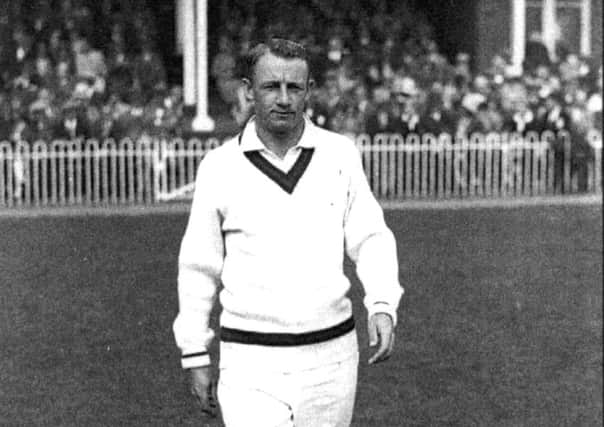On this Day: '˜I set out to break the record,' says Bradman of his 452 runs


Playing for New South Wales against Queensland in the Sheffield Shield, Bradman scored 452 not out, then the highest individual innings in first-class cricket.
It beat the previous best of 437 by fellow Australian Bill Ponsford, for Victoria against Queensland in 1927, and it remained the world record until 1959, when Hanif Mohammad hit 499 for Karachi against Bahawalpur in Karachi.
Advertisement
Hide AdAdvertisement
Hide AdBradman’s innings is still the third-biggest of all-time, with Brian Lara having taken the crown from Hanif in 1994 with an unbeaten 501 for Warwickshire against Durham at Edgbaston.
When Bradman walked out to bat at the SCG on January 6, 1930, for the third day of a four-day match, he already had 205 runs to his name.
New South Wales were 368-3 in their second innings, having scored 235 first time round (Bradman three), to which Queensland had replied with 227.
The lead stood at 376 and, after a rest day to re-energise, Bradman resumed with the express intention of taking down Ponsford’s record.
Advertisement
Hide AdAdvertisement
Hide Ad“I definitely and deliberately set out to establish a record,” he said.
“The highest individual score in first-class cricket was the one record I wanted to hold, and the opportunity came my way in this match.
“I felt everything was just right – the state of the wicket, the state of the game, the state of my health. Also, I was in the mood for runs.”
About 5,000 spectators were present to see the 21-year-old make history and, by lunch, Bradman had lifted his score to 310 out of 551-5.
Advertisement
Hide AdAdvertisement
Hide AdHis quadruple century soon followed and his rate of scoring was exceptional throughout, Bradman’s innings spanning just under seven hours before New South Wales declared on 761-8.
“Displaying a wider range of strokes than usual, Bradman batted without a trace of error during his long stay and hit no fewer than 49 fours,” commented Wisden.
“Faced with the appalling task of getting 770 runs,” the almanack added, “Queensland offered scarcely any resistance”, the visitors, 72-7 at the end of day three, surviving less than three overs on day four to be bowled out for 84 to lose by 685 runs.
For Bradman, who received a congratulatory telegram from Ponsford, it was just the start of an incredible year.
Advertisement
Hide AdAdvertisement
Hide AdIn England that summer, he scored what remains the most number of runs by one man in a Test series – 974 at an average of 139.14, including 334 in the Headingley Test, then the highest individual score in Test cricket.
As the great England fast bowler Harold Larwood lamented, there was “no answer” to Bradman in 1930.
“His stamina and concentration were extraordinary,” he said. “Don was cruel the way he flogged you.”
It was a feeling that the Queensland bowlers in Sydney 88 years ago today knew only too well, Bradman’s unbeaten 452 a lasting monument to his skill and appetite for runs.